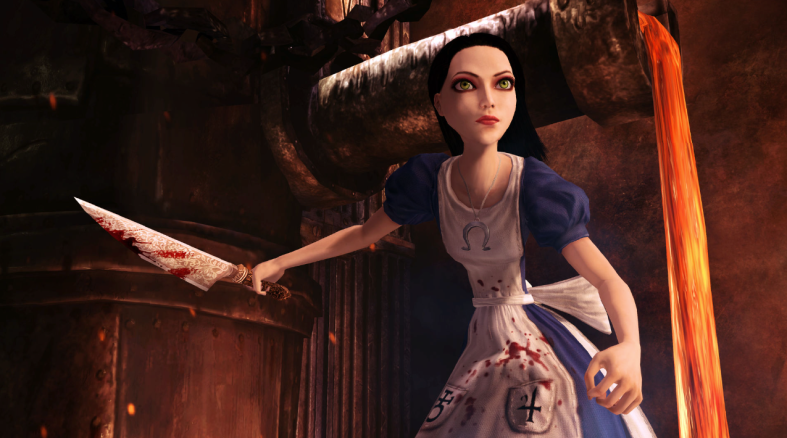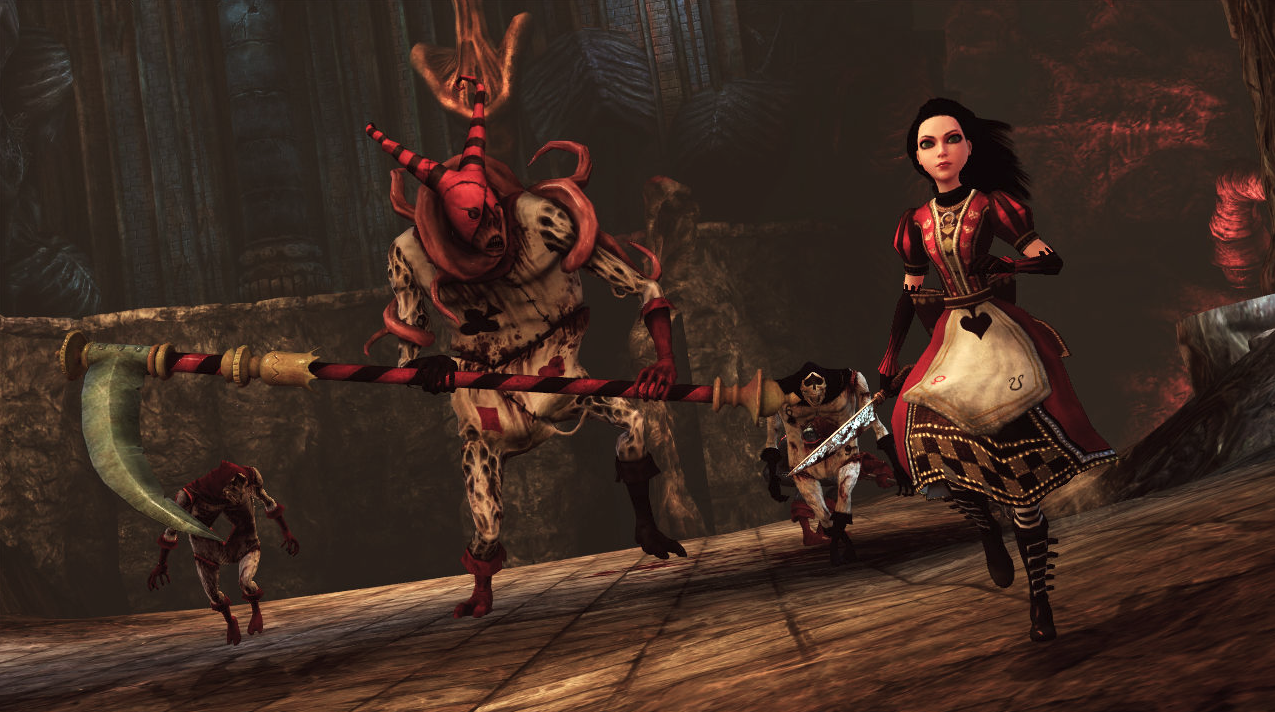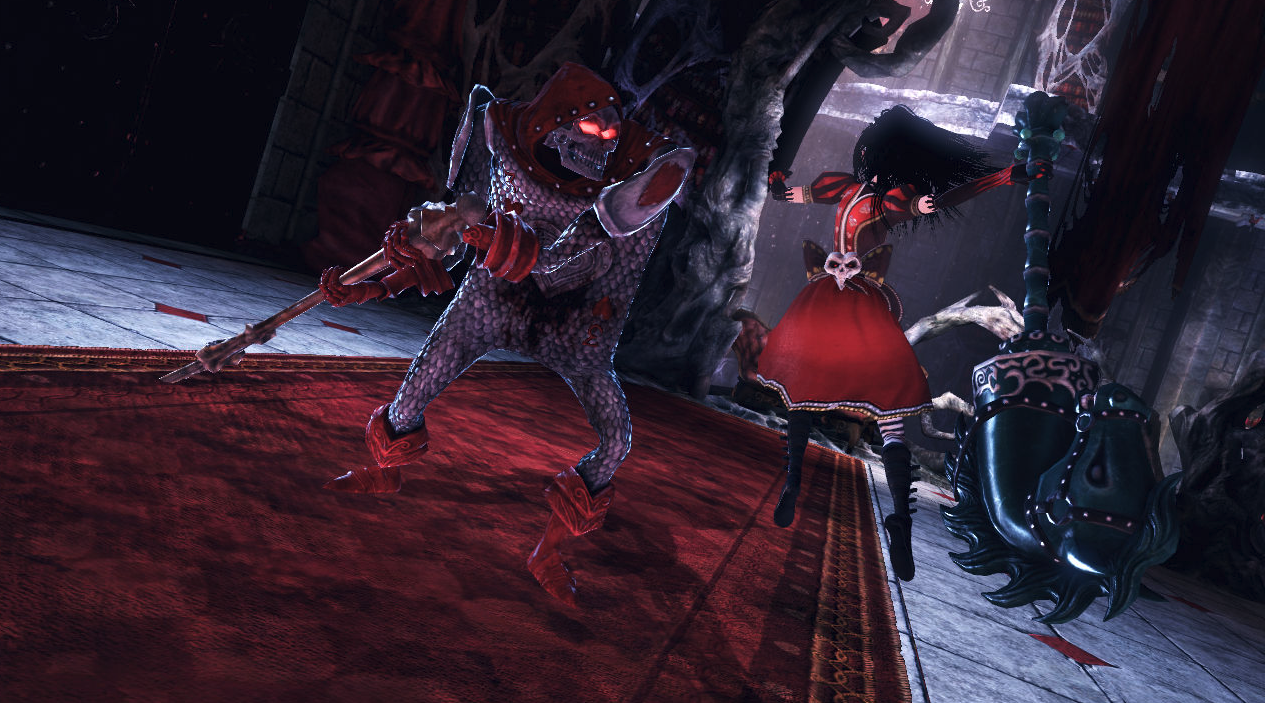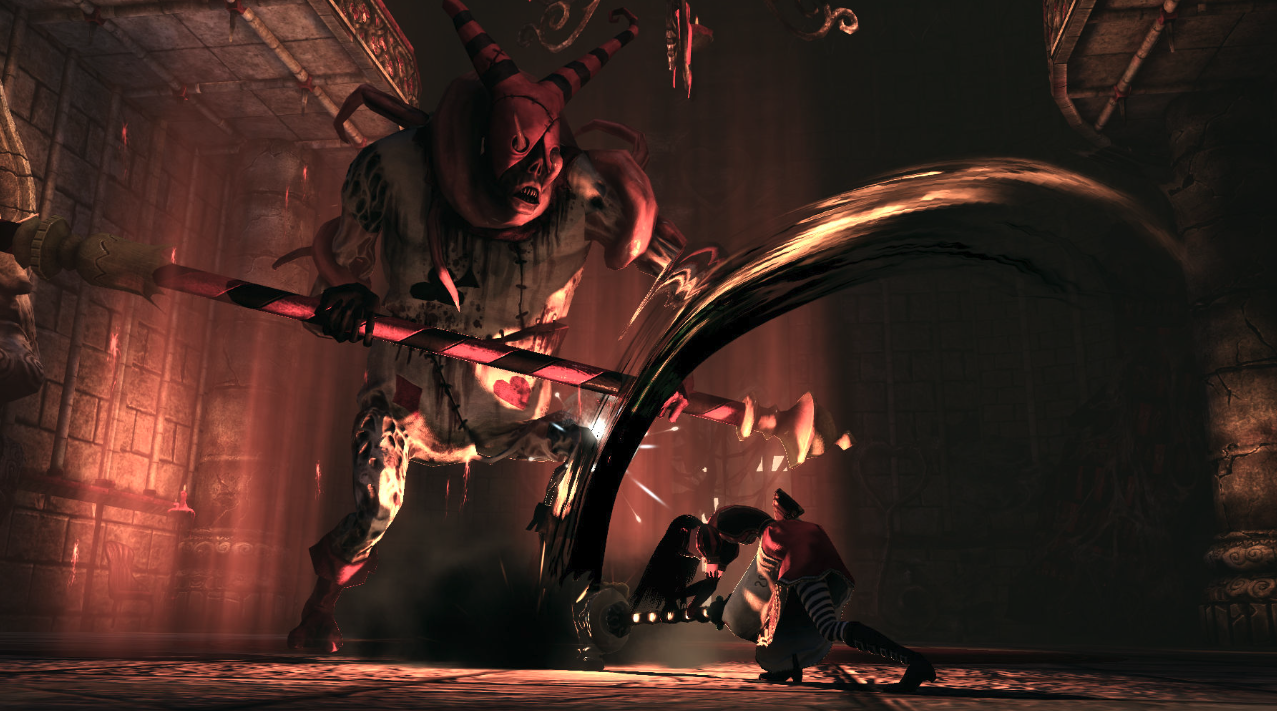Monster Mania: The Unbridled Creativity of Alice: Madness Returns

Monster Mania is a weekly column celebrating the unique and varied monster designs in horror gaming.
On paper, crafting surreal dreamscapes sounds like an easy win. Bending the laws of nature and how a fantasy world operates allows a creative imagination, however terrifying, to run rampant. However, throwing the rules out the window can also yield disorganized creativity, a lack of logic, or a consistent tone. Enter American McGee’s Alice: Madness Returns, yet another strong showing of McGee’s unbridled creativity while understanding that maintaining a consistent tone is essential to continuing the wild world of Wonderland.
Alice: Madness Returns is the 2011 sequel that picks up a year after the events of 2000’s American McGee’s Alice. Alice is once again grappling with turmoil and trauma and returns to Wonderland in search of answers. But a new evil force has invaded and overthrown Wonderland, birthing an entirely new crop of demented monsters and little Wonderland freaks standing in the player’s way of uncovering Alice’s mysterious past.

Part of what allows the world of Alice’s many monster varieties to click together, despite their design differences, is their being reflective of their environment. For instance, early on, Alice finds herself in a Foundry-like area, where towering industrial machinery turns like clockwork in the background. So when she is approached by spear and shield-wielding goblin-like creatures with gear cogs protruding from their backs, they fit in with the environment.
Likewise, Alice will face arctic critters who burrow underneath the ice, cigar-smoking crabs with cannons for arms underneath the sea, and towering playing card soldiers in a kingdom composed of, you guessed it, playing cards. If there’s one criticism that no one can make about Madness Returns, the sequel lacks a twisted and varied vision of Wonderland.
Monsters being a grotesque reflection of their environments gives the world of Alice the maddening connective tissue that allows the game’s elaborate and creative designs to feel connected as part of Wonderland, despite their apparent differences. Furthermore, I was expecting more of a hack-and-slash type experience and was pleasantly surprised to find that combat has more depth.

Take the Cannon Crab, for instance; apart from being a cigar-smoking crab with a cannon for an arm, Alice cannot damage this creature while standing upright. Utilizing a heavy attack from Alice’s hobby horse hammer or a clockwork bomb will flip the crab on its back briefly, allowing Alice to slice into its fleshy belly. Do this enough times, and Alice will sever its arm cannon, neutering the crab’s ability to be a ranged threat.
Pairing enemies requiring specific parameters to bypass their armor to deal damage with fodder enemies gave Madness Returns a bit more complexity to combat. I prefer to tear through fodder enemies for the better part of the game’s 10-12-hour campaign.
This isn’t to say that some of Wonderland’s horrors aren’t simpler in design than the above example, but how the game recycles monster types and variables I found to be inspired. Early on, Alice will face the easily killable Insidious Ruins, which are black blobs that feature a doll mask for a face. Fodder enemies, if nothing else, but how Madness Returns recycles this monster’s design aesthetic to create new and more challenging mutations down the road is inspiring.
Shortly after facing Insidious Ruins, Alice encounters Colossal Ruins, the bigger and angrier sibling of Insidious Ruins. Most notably, Colossal Ruins tower over their Insidious counterparts and feature multiple doll masks that must be destroyed before they can be defeated.

Now, I can’t claim that Alice: Madness Returns combat doesn’t become somewhat stale the closer to the game’s ending the player gets. There’s a somewhat formulaic approach to encounters, and the player will become more than familiar with the groupings of enemies thrown at Alice in a given moment. That being said, I only ever truly felt this towards the last few hours of the story, as Madness Returns balancing of platforming, combat, and narrative world-building worked so well in tandem with one another.
While American McGee’s Alice series has ended with Madness Returns, I am thankful for McGee’s twisted and unbridled creativity. By providing unforgettable storytelling, monster designs, and a narrative that encompasses our world’s fantastical and grounded horrors, McGee has left his unique stamp on the horror and indie gaming space that won’t soon be forgotten.
For more horror game reviews, opinions, and features, check out DreadXP.
Categorized:Editorials

